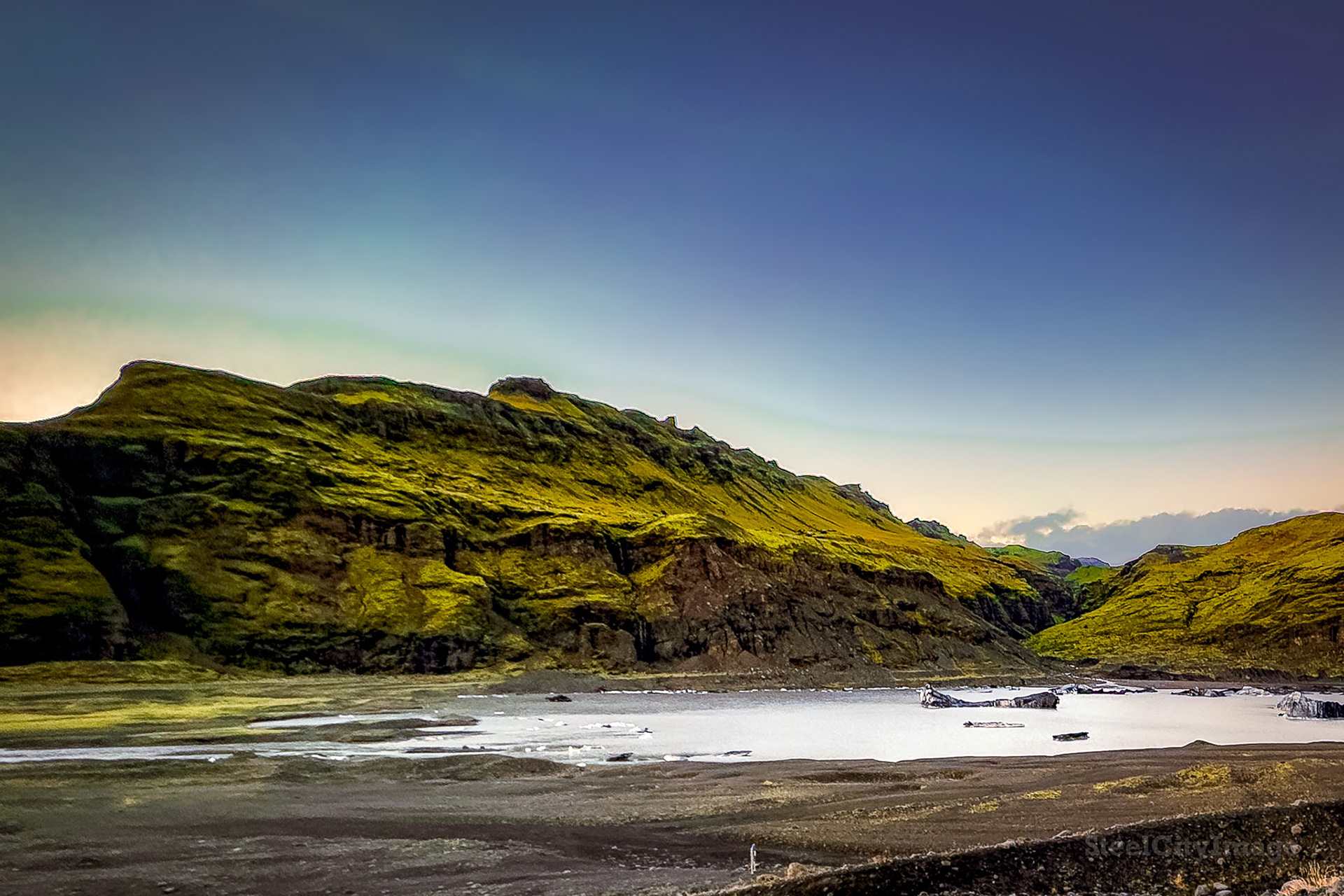Eldhraun, Iceland – A Land of Shifting Figures and Forgotten Myths
Eldhraun isn’t just a landscape—it’s a trick of the eye, a place where the mind plays games with the horizon. When I first shot this in 2022, my camera struggled to capture the impossible greens of the moss-draped lava fields. So, I took another route—stripping it to a monochrome dream, then washing the midtones in an eerie green, like something pulled from another realm.
And maybe that’s what this place is. The further you walk, the more you start seeing figures in the distance—watching, waiting, shifting when you aren’t looking. The lava moss undulates like frozen waves, swallowing anything that lingers too long. That jagged rock in the distance? Maybe it’s just a rock. Or maybe it’s something else.
The Icelandic sagas whisper of trolls turned to stone by the morning sun, of spirits bound to the land, their shapes emerging in the mist. And here, in the heart of Eldhraun, it feels less like folklore and more like fact.
I need to go back.
Eldhraun isn’t just a landscape—it’s a trick of the eye, a place where the mind plays games with the horizon. When I first shot this in 2022, my camera struggled to capture the impossible greens of the moss-draped lava fields. So, I took another route—stripping it to a monochrome dream, then washing the midtones in an eerie green, like something pulled from another realm.
And maybe that’s what this place is. The further you walk, the more you start seeing figures in the distance—watching, waiting, shifting when you aren’t looking. The lava moss undulates like frozen waves, swallowing anything that lingers too long. That jagged rock in the distance? Maybe it’s just a rock. Or maybe it’s something else.
The Icelandic sagas whisper of trolls turned to stone by the morning sun, of spirits bound to the land, their shapes emerging in the mist. And here, in the heart of Eldhraun, it feels less like folklore and more like fact.
I need to go back.

The Slumber of Fafnir.
Beneath the vast Icelandic sky, the emerald ridges of Sólheimajökull rise and fall like the spines of an ancient beast frozen in time. The ice-streaked valley, carved by eons of glacial force, feels less like a place of the present and more like the remnants of a long-forgotten battle—one fought not by men, but by creatures of legend.
The sagas tell of Fafnir, a monstrous dragon who once hoarded a cursed treasure so great that even the gods whispered of its power. Betrayed by greed and doomed by prophecy, Fafnir was struck down by the warrior Sigurd, his body collapsing into the earth, his breath turning to mist. But not all believed the beast was truly slain.
Some say that deep in Iceland's highlands, dragons do not die—they only sleep. Their bodies become the land, their molten blood cools into rivers, and their breath lingers in the mist that curls over the ice. To stand here, among these rolling hills and scattered glacial fragments, is to stand upon the spine of something ancient. Something waiting.
As the last light of day caresses the ridges in gold, it is easy to believe that one day, when the earth quakes and fire rises once more, the sleeping dragon will stir.
Beneath the vast Icelandic sky, the emerald ridges of Sólheimajökull rise and fall like the spines of an ancient beast frozen in time. The ice-streaked valley, carved by eons of glacial force, feels less like a place of the present and more like the remnants of a long-forgotten battle—one fought not by men, but by creatures of legend.
The sagas tell of Fafnir, a monstrous dragon who once hoarded a cursed treasure so great that even the gods whispered of its power. Betrayed by greed and doomed by prophecy, Fafnir was struck down by the warrior Sigurd, his body collapsing into the earth, his breath turning to mist. But not all believed the beast was truly slain.
Some say that deep in Iceland's highlands, dragons do not die—they only sleep. Their bodies become the land, their molten blood cools into rivers, and their breath lingers in the mist that curls over the ice. To stand here, among these rolling hills and scattered glacial fragments, is to stand upon the spine of something ancient. Something waiting.
As the last light of day caresses the ridges in gold, it is easy to believe that one day, when the earth quakes and fire rises once more, the sleeping dragon will stir.
The Cursed Grove of the Norns
Deep in the northern wilds, where the wind speaks in whispers and the earth is older than memory, there stands a grove unlike any other. Twisted and gnarled, the trees here do not simply grow—they writhe, reaching in silent agony toward the sky, as if caught between worlds. The sagas tell of a time when men still sought the wisdom of the Norns, the three weavers of fate who dwell at the roots of Yggdrasil, the World Tree.
It is said that long ago, a band of warriors came to this place seeking to change their fate. They had lost brothers to war, watched their home burn in raids, and defied the gods themselves by demanding a different destiny. But the Norns do not grant favors lightly. When the warriors awoke the next morning, their bodies were gone—only trees remained, their arms still outstretched, their fingers now frozen in bark.
Even now, the wind carries their whispers. Travelers passing through this cursed grove say they hear voices woven through the rustling branches—pleading, warning, or perhaps waiting for another soul bold enough to challenge fate.
And so, the trees grow, forever reaching, forever remembering.